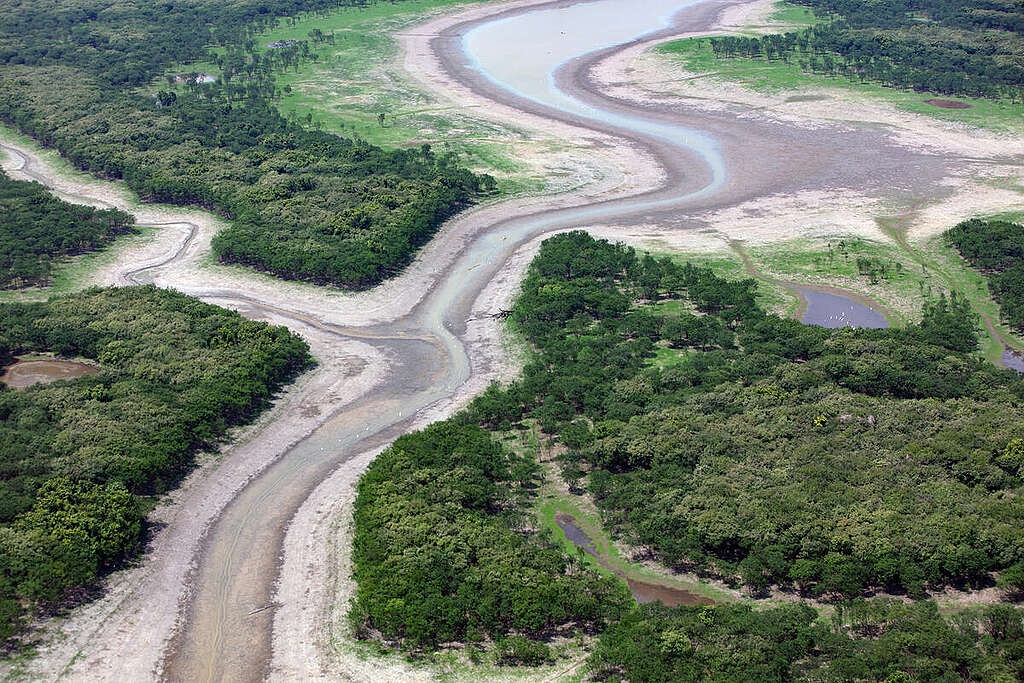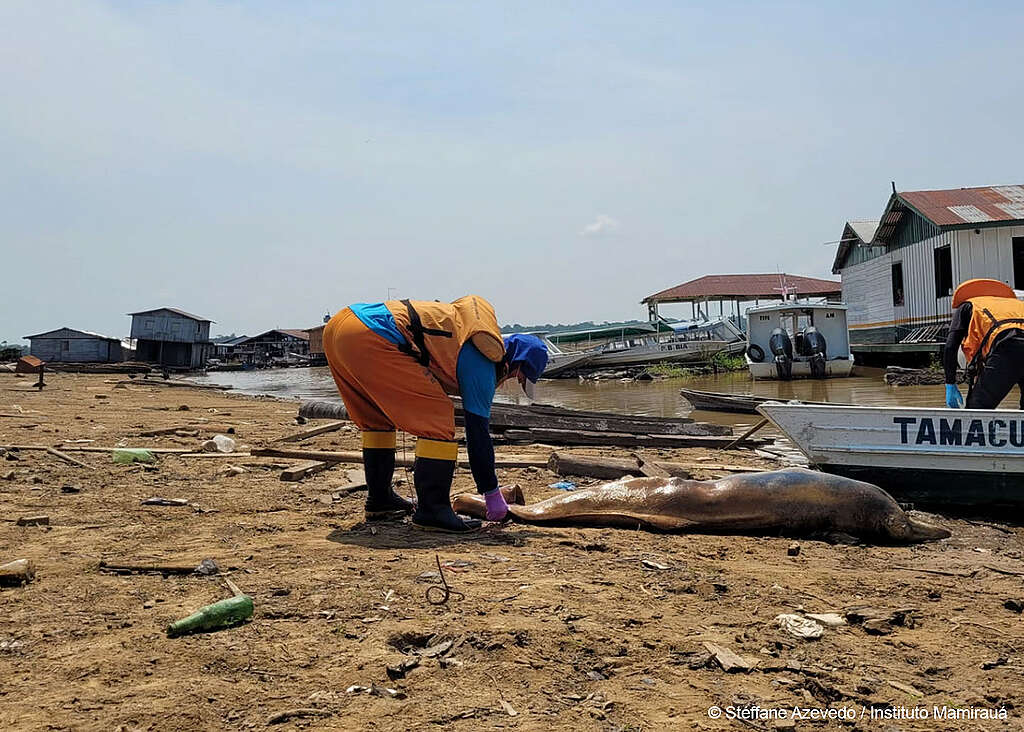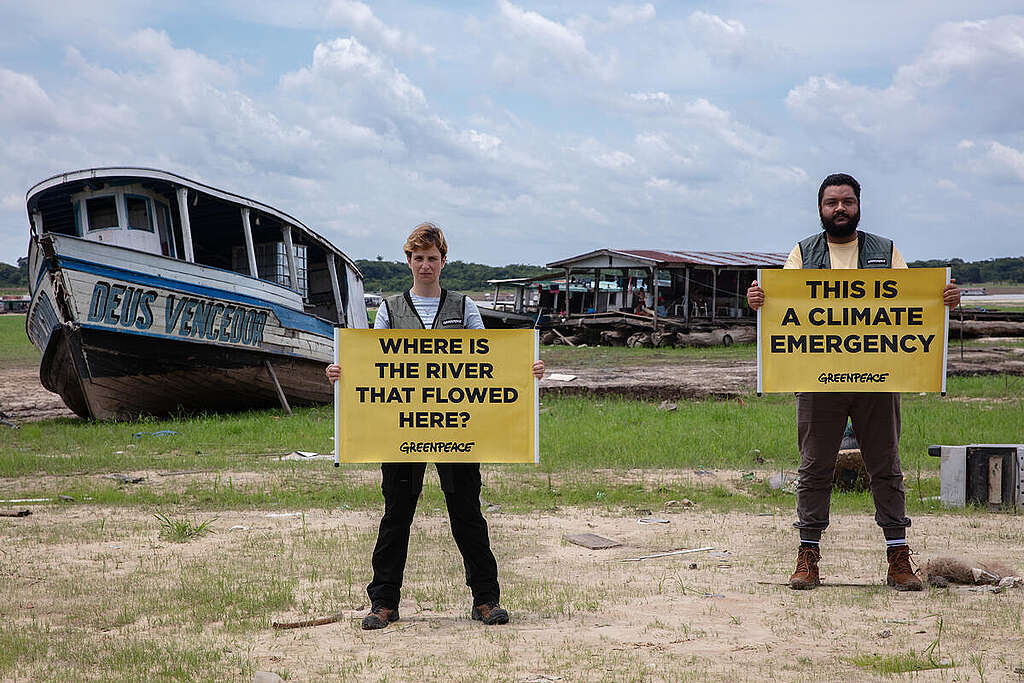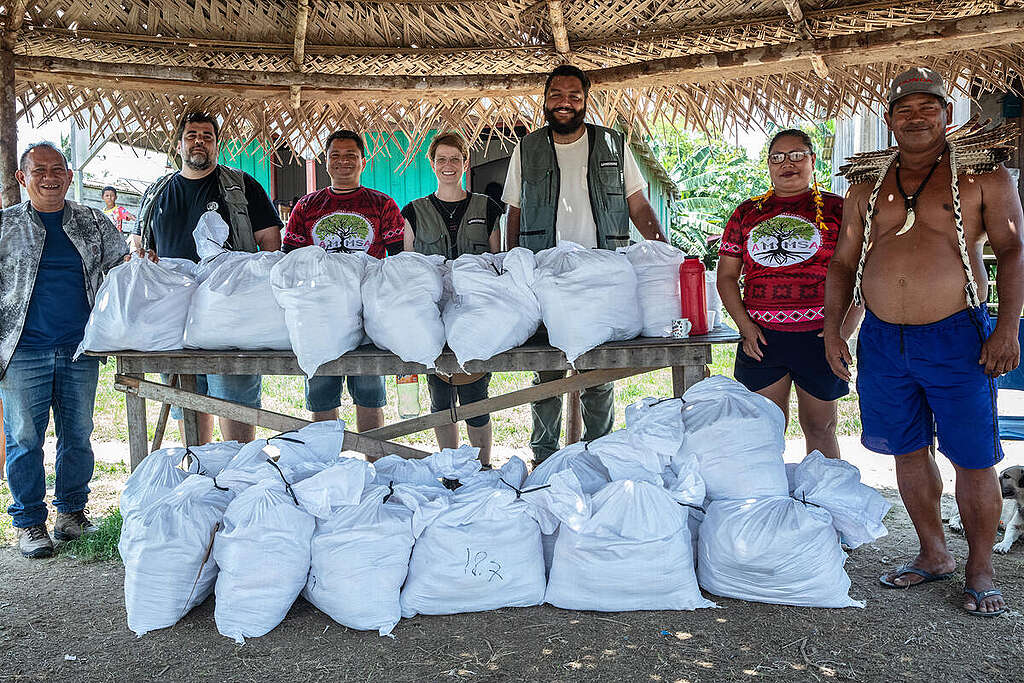When people think about the Amazon, a picture of a tropical forest, teeming with life, with a network of majestic rivers might come to mind. But a historic drought in the region is putting the lives of hundreds of thousands, especially Indigenous People and traditional communities, at serious risk.

Life in the Amazon region is dictated by the rise and drop of the water level of the rivers, which naturally occurs in regular cycles. The dry season in the Amazon happens between July and October, which is, due to the decrease of rain, when the level of the rivers falls. But this year, it is possible that many rivers in the Amazon will reach some of the lowest levels in history.
The rivers are an important part of the livelihood of people who live in the region, and are often called highways in the Amazon. It is by way of the river that food, medicines and other goods reach most cities, towns and communities. But with such a strong drought, the water level in many rivers became so low that boats cannot navigate, making it impossible for several parts of the region to have access to basic needs. Beyond that, the rivers are also the main source of food in a region that is heavily dependent on fishing. As some rivers and lakes are drying up completely, a desolate landscape has been unfolding, with thousands of fish dead due to lack of water or oxygen. Photos of dead pink dolphins went viral in the past weeks. Drinking water supplies are contaminated or scarce.

The climate crisis driving the drought
The extreme droughts in the Amazon are aggravated by the climate crisis and have been exacerbated in a year with El Niño, causing the weather to be hotter than usual. In Brazil and all over the world, the climate crisis has been impacting millions of people already, especially vulnerable communities. There are no more excuses for governments to postpone acting on climate.

Fires and deforestation are responsible for 49% of Brazil's greenhouse gas emissions. Despite a significant decrease in deforestation this year in the Amazon, we are still seeing a high number of fires, especially in the areas where the droughts are more severe. These fires are not only contributing to the climate crisis, they are directly impacting the health of the local population, that is having to deal with a combination of high temperatures, droughts, and air pollution.
Zero deforestation is the greatest contribution Brazil can make to help mitigate the effects of the climate crisis and slow down the rate and intensity of current and future extreme weather events in the country and help fight the global climate emergency.
How Greenpeace Brazil is taking action
There is no time to waste, and while we demand the Brazilian government to take action to end deforestation and protect the Amazon, people need urgent support. That is why Greenpeace Brazil has organized a task force called Wings of Emergency to deliver, by plane, food, water and other basic resources to impacted communities in the Amazon. Over the first week of October, three tonnes of food and resources were delivered to populations in the region.

Wings of Emergency will also provide logistical support to local organization Mamirauá Institute, which is leading a task force, along with other partner organizations such as WWF and ICMBio to prevent an even further catastrophe to the biodiversity in the region. A group of biologists, veterinarians and scientists are working together to collect water, blood and other materials to understand the extent of the situation and be able to provide the necessary support to the animals that are found alive. Greenpeace Brazil is helping by transporting these professionals and collected materials to and from impacted areas.
The climate crisis is already impacting millions of people and biodiversity all over the world. There's no more time to waste. Global leaders must take action to prevent stronger and more deadly extreme weather events before it's too late.






